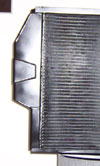Coatings for threaded fasteners
 As far as threaded fasteners are concerned, there are a large number of coatings which can be applied, and in doing so we are generally seeking to address one of a small number of issues, the main ones being:
As far as threaded fasteners are concerned, there are a large number of coatings which can be applied, and in doing so we are generally seeking to address one of a small number of issues, the main ones being:
Corrosion
- Material incompatibility
- Friction
- Lack of suitable lubrication
In terms of addressing the problem of corrosion, the main candidates come from a list of metallic platings, although polymeric alternatives exist. The common types of plating aimed at limiting or delaying corrosion are ones that we are probably all familiar with, such as zinc or cadmium. Cadmium plating has, mainly for environmental reasons become less prevalent in recent years. Zinc plating, (often called galvanising) is still very common and can be done by your local plating shop, although you must be very cautious before considering this. There is a thermal process which must be undertaken after any electroplating process (discussed in more detail in the Fasteners Focus article in Race Engine Technology issue 41) immediately after plating if brittleness and early failure is to be avoided, particularly with high-strength steel fasteners. ‘Mechanical Zinc’ coatings do not suffer in the same way with this problem of embrittlement. There are sprayed metallic coatings and some which are either water-borne or solvent-based which again will not be subject to concerns over embrittlement. Plated fasteners offered by reputable manufacturers of fasteners will have had the thermal treatment done (the reputation of the fastener manufacturer relies on this process having been done) and you can rest assured that embrittlement should not be a problem to you. A number of polymeric alternatives exist and these are becoming more popular but are often an expensive option compared to more established metallic plating methods. ‘Black Oxide’ or ‘Chemical Blacking’ as applied to steel fasteners gives only temporary protection against corrosion, and phosphating may be a better alternative here.
Material incompatibility problems occur where reactive fastener materials are used in combination with identical or similar materials. The microscopic cause is the cold-welding of material in the threads between the male and female parts. Stainless steel is a good example of a material where this is a serious concern. A stainless bolt wound finger-tight into a tapped hole in the same or similar material may become immediately and permanently seized without any significant load ever being applied. Titanium is also afflicted by this problem known as galling. In the case of galling, there are many options available as far as coatings are concerned. Metallic platings are often used, and industrial silver plating is often used in this application. Other solvent and water-based spray coatings are also popular, which are often based on traditional lubricating substances such as molybdenum disulphide or PTFE. The new generation of PVD and CVD coatings are also popular for these applications
In the theoretical relationship between torque and pre-load, we find that friction plays a large part, and reducing this can have some advantages. Clearly we generally apply a thread lubricant of some description, but sometimes this may not be possible or may give inconsistent results. In this case we may want to apply a low-friction coating, and we find that most of the aforementioned platings and coatings can be used for this reason. Electroplated zinc fasteners for example are quoted to have a coefficient of friction around 25% lower than otherwise identical steel fasteners. We should be careful to re-evaluate tightening procedures if using low-friction coatings. Failure to do so may result in yielded fasteners or stripped threads.
Lack of suitable lubrication is often a problem where fasteners are used in hot environments. The obvious example here for us are exhaust manifold studs, where we will often find silver-plated nuts being used, and these are commercially available from various sources for this and other applications in industry.
Written by Wayne Ward.